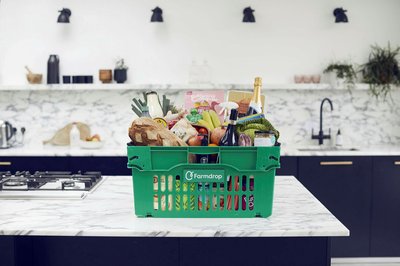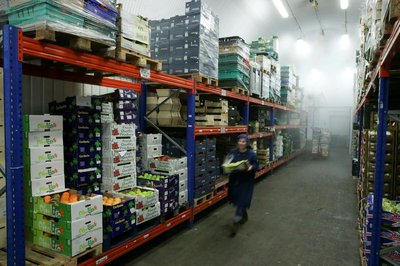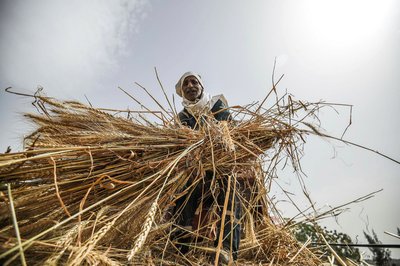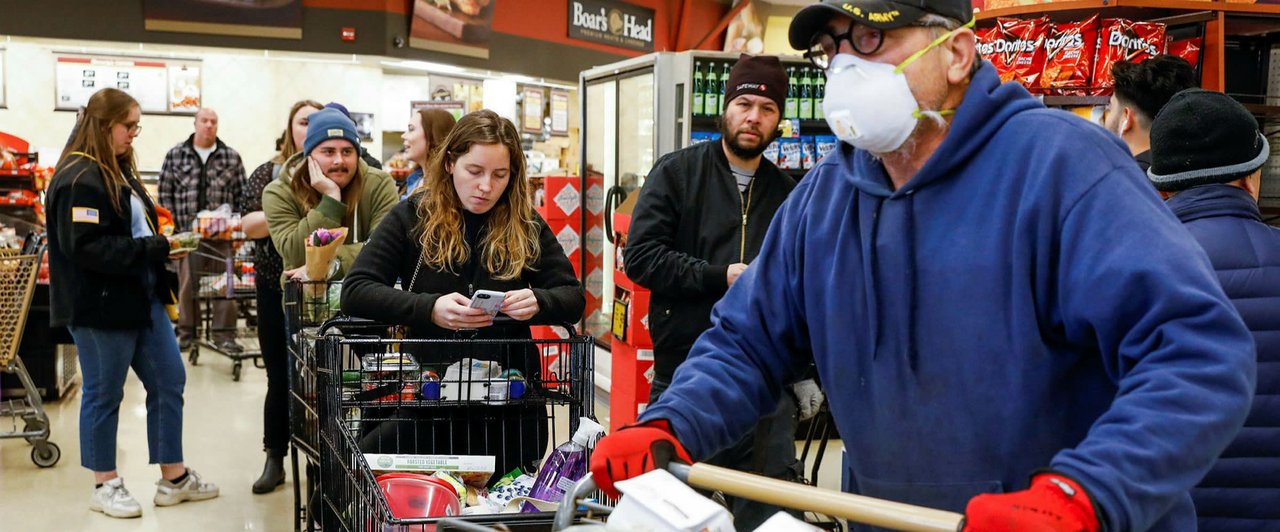Pandemic prompts rethink of food supply chains
It has been a hectic year for Eleanor Herrin. Since the UK’s first lockdown in March, business has been booming for the chief executive of Farmdrop, an online start-up focused on distributing sustainable, locally produced food.
Monthly revenues tripled from pre-pandemic days, while the number of regular customers has jumped 80 per cent to 15,000 compared with the end of 2019.
“We were able to be nimble and add capacity during the lockdown,” says Ms Herrin. As food producers found themselves deprived of restaurant customers, Farmdrop managed to connect them with shoppers instead.
“Having a local focus definitely helped us during the period because we were very quickly able to understand demand and we were able to help,” Ms Herrin adds.
As the pandemic exposed weaknesses in the ways that food is moved from farm to fork, small and local businesses like Farmdrop came into their own.
“Super-efficient, highly centralised food systems are fragile, because if they go ‘wrong’, they fail,” says Tim Benton, research director at Chatham House, the international affairs think-tank.
A shock to the system
Supply chains in many developed countries struggled to cope both with the closure of centralised processing facilities, such as the large-scale meatpacking plants that became Covid-19 hotspots, and with rapid changes in demand, where restaurants and other hospitality outlets shut down while demand from stockpiling consumers soared.

Food suppliers and retailers scrambled to adjust to a demand mismatch, which emptied supermarket shelves on the one hand and on the other stranded supplies for wholesale use in the hospitality sector. In the UK, for example, grocery sales rose by almost a tenth between May and February, while out-of-home food consumption fell by 36 per cent in the first half of the year, according to market researcher Kantar.
For a more resilient system, there needs to be more spare capacity and diversity, especially at a time when risks of disruption are rising, says Prof Benton.
Ricardo Salvador, director of the food and environment programme at the Union of Concerned Scientists in the US, agrees. He compares food systems to communication networks, arguing that they should model themselves on the internet.
"Food systems should model themselves on the internet"
Modern communication over the internet is supported by networking technology originally built in the 1960s to remain functional even in the event of a nuclear holocaust. The network was designed to keep on running even if part of it was destroyed.
Mr Salvador thinks food supply chains should be similarly resilient. “[We need] food hubs that can withstand [disruption] and continue to both produce and distribute in different regional areas,” he says. That means investing in local and regional suppliers and distributors as part of an effort to diversify the food system.

Proponents of localism argue that food production using renewable sources of energy without the “food miles” of transporting supplies makes environmental sense.
And while increasing redundancy in the food system could lead to more waste, because about a third of the food currently produced is wasted, simultaneous efforts to tackle that problem would both boost food availability and be good for the environment. Prof Benton says: “If we stop wasting, that means there is more food available in the system, in a way that is analogous to having a warehouse of stock.”
Safety first
For countries that rely heavily on food imports, the pandemic has also brought home the need for food security.
While international food policy experts are relieved that the world has not seen a repeat of the global food price crisis of 2007-08, when surging prices for staple foods led to riots in some developing countries, this year’s lockdowns have raised the spectre of disruption in trade flows.
“In a stable world, maximising comparative advantage by growing what we’re really good at, exporting the excess and buying in what we’re less good at growing, is economically sensible,” says Prof Benton. “[But] trade exposes us to risks.”
Some governments, aware of such risks, have moved to shore up state reserves. North African countries such as Egypt, Morocco and Algeria have been actively buying over the past few months to boost their wheat stockpiles.

Wayne Gordon, an analyst at Swiss bank UBS in Singapore, says state grain authorities are not panic buying. “[Governments] are buying for strategic purchases . . . it’s a different style of buying than in 07 and 08,” he says.
Big food importers are now making food security a central part of their national policy frameworks. China has been urging consumers to waste less, while governments in Singapore and the Gulf have been investing in new technologies to increase local food production.
Investments in vertical farms and high-tech greenhouses in order to ensure stable supplies of fruit and vegetables even if trade flows falter are in vogue. Mr Gordon also notes that while many countries are building new storage facilities, including for chilled and frozen food. “They want to be prepared for supply disruptions,” he adds.
"Super-efficient, highly centralised food systems are fragile, because if they go ‘wrong’, they fail"
Tim Benton
Countries that produce their own food as well as importing from others may be less vulnerable to supply-chain crises but they are not immune. Prof Benton says it would be sensible for policymakers to weigh the costs and benefits of incentivising more diverse production — “especially given [that] the world’s stability cannot be relied on”.
The success of Farmdrop and other food start-ups suggests that, on the ground level, the food system is already evolving. Technology and shorter local supply chains are key elements in this shift, while food distributors that can respond to the need for convenience as well as the demand for fresh and nutritious food are making headway
“[Because of] the appreciation for higher-quality, higher-welfare food, there are tailwinds — we definitely see organic sales growing,” says Ms Herrin. “It means money going into a system which is an alternative to big production and factory farming, whether that’s local or not.”
Copyright The Financial Times Limited 2020
© 2020 The Financial Times Ltd. All rights reserved. Please do not copy and paste FT articles and redistribute by email or post to the web.

